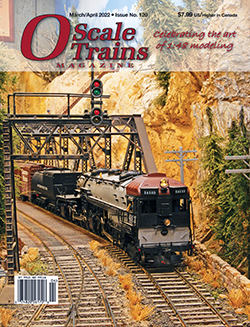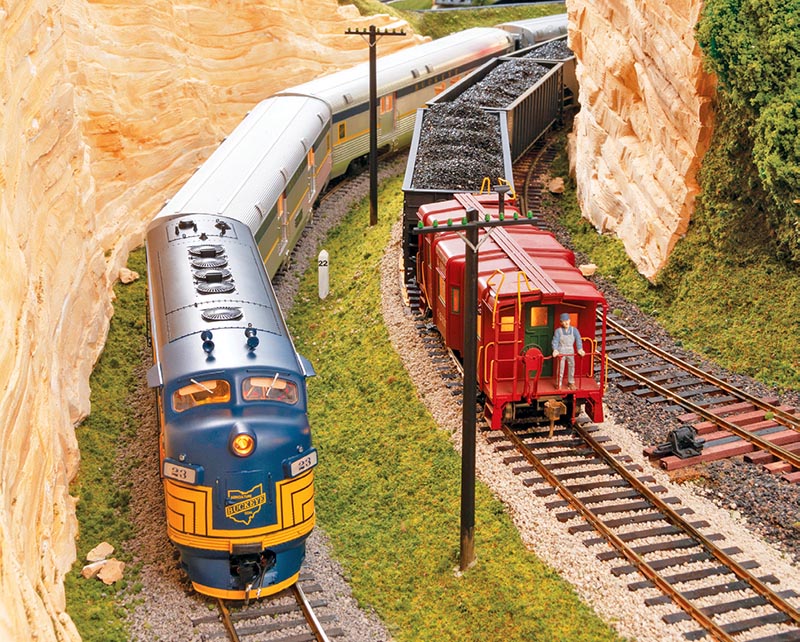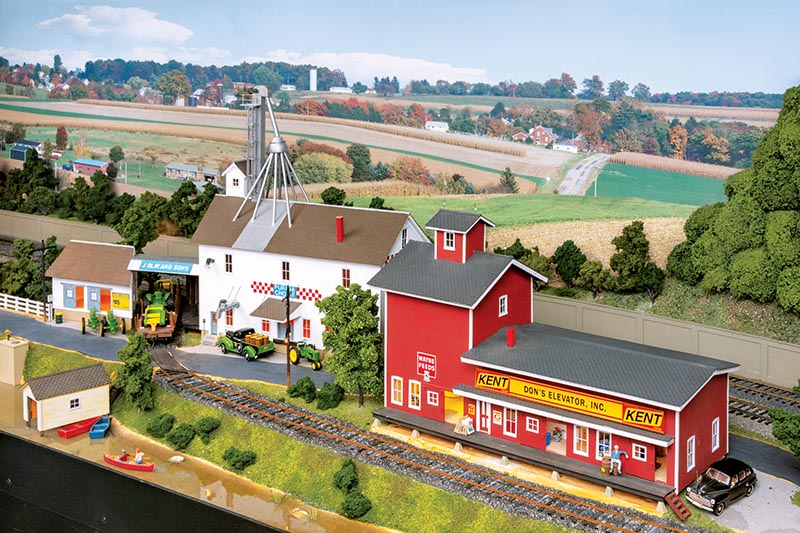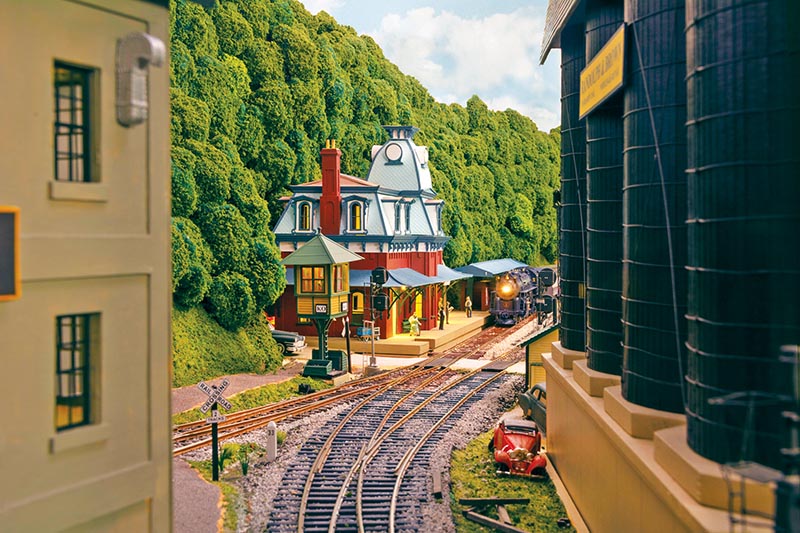 By Herm Botzow/Photos by Mark Corliss
By Herm Botzow/Photos by Mark Corliss
This is the first of four articles on how to construct a large O scale layout. The articles use my O scale Buckeye Railroad as an example. These are what to do, not how to do articles. They will describe important aspects of layout conception, room preparation, construction, and operation. Those of you who are just starting may find that first you need to build a small layout to discover exactly what sort of setup will fit your situation and interests.
For starters, we often feel envious of our HO compatriots because they can cram so much more railroad into the same space. However, it may be that the larger size of our models will make it easier for viewers to immerse themselves into a well-thought-out O scale scene. The effort and cost of building a large layout are significant. Be sure this is what you really want and be willing to commit the time and resources to build it as your dream layout.
Acquiring Knowledge and Skills
A good starting point is John Armstrong’s “Track Planning for Realistic Operation.” This book and similar ones will get you started on the planning process and help you focus on the kind of model railroad that will provide you with years of enjoyment. My track plan emerged after carefully studying magazine articles that included track plans for the layouts of Frank Ellison and Allen McClelland. Yours may be entirely different. Various model railroad magazines and books will provide detailed explanations of specific skills such as installing wiring, building structures, and adding scenery.

Additionally, as a prelude to building your own layout, operate on other layouts, including those in other scales. As an involved visitor, you can become familiar with a variety of operations and learn very quickly the strong and weak points of various track plans as they re-late to your interests. These experiences will hone your ideas of what you want to build.
Finally, consider joining the National Model Railroad Association. Pursue their Master Model Railroader program and begin earning certificates in various important aspects of the hobby, all skills you will need to build and operate a layout.
Location and Emphasis
The first decision is where to con-struct your layout. Options range from the top of a ping pong table in the garage to an entirely separate building. However, most layouts are in basements so that will be our focus. Ideally, your basement will be directly accessible from the outside.
One pitfall in large layout construction is trying to optimize each individual element. The perfectionist who attempts this feat invariably takes forever and ends up with a layout that does not function well as a whole. It is necessary for us to devote equal time to all aspects of its construction, rather than focusing on the one or two elements that interest us the most at present.

Time and Place
Now comes an important step in creating a realistic operation — setting a time and place. This can be a difficult and far-reaching decision. It is difficult because we model railroaders often have interests in more than one railroad or era. Your decision will be far-reaching because it will allow you to detail your layout and trains in a very specific way that adds greatly to the layout’s realism. For example, stop signs at the time that I selected were yellow, not red!
The date that I chose was June 22, 1955. The year 1955 was a transition year that allows me to operate both steam and diesel locomotives on the layout. The month of June has to do with the type of vegetation and the height and activity of the rivers planned for the layout. And June 22 on that year was a Wednesday which permits commuter operations to and from the major city on the layout…


